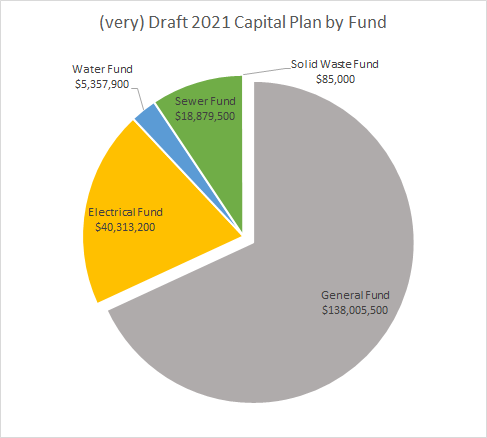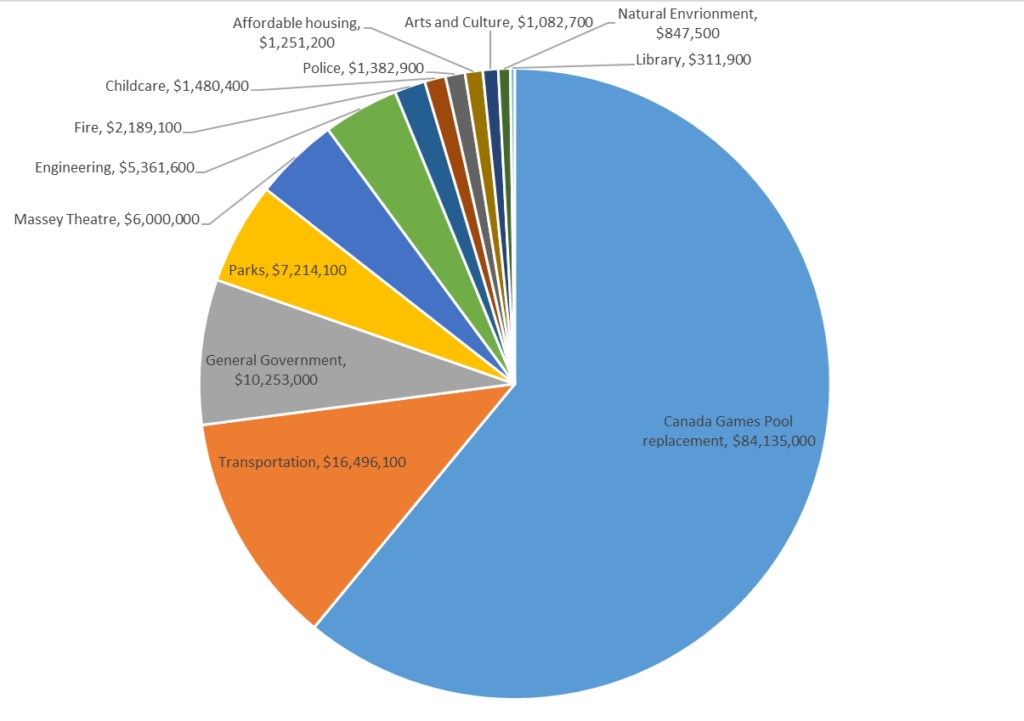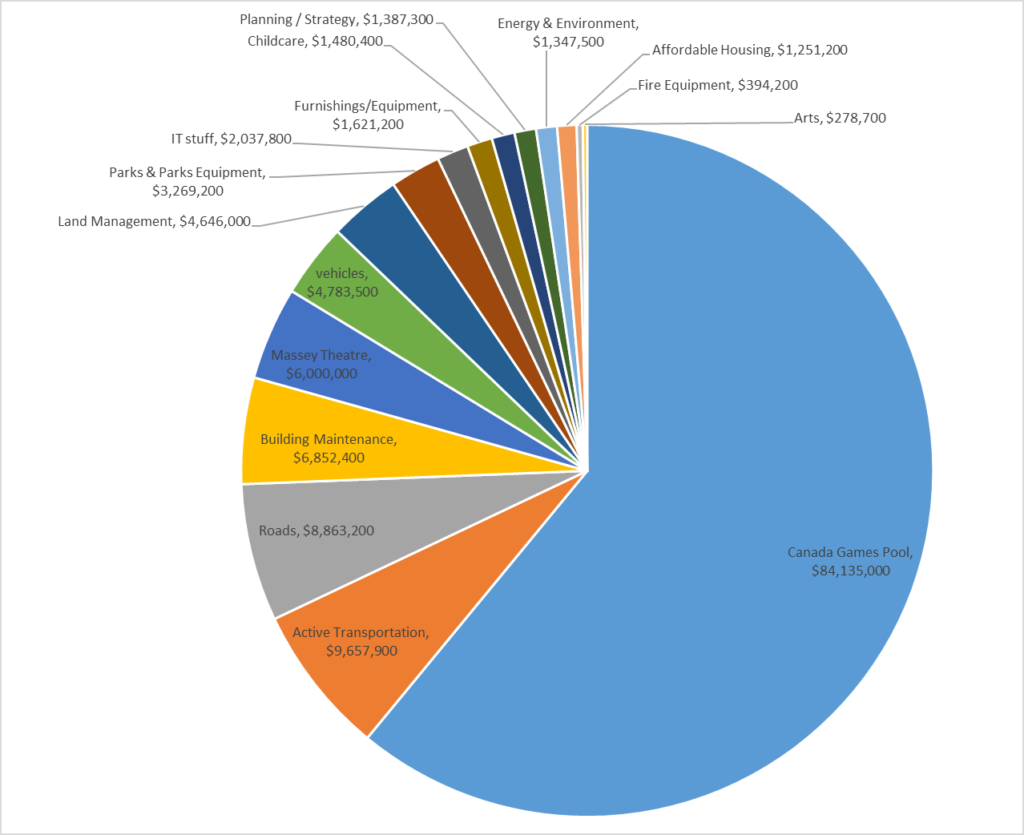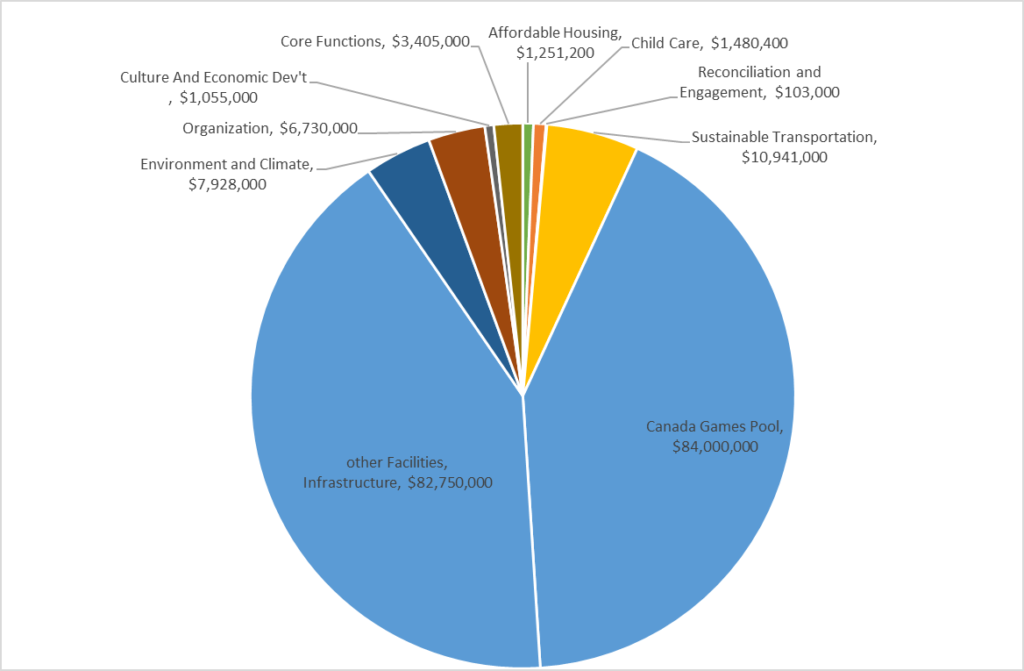This week Council had a Workshop instead of a Council meeting. We have these intermittently to dig deeper into subjects than we have time to in a regular meeting. It also allows us to have more of a free-form conversation with staff than the strict structures of a Council meeting. This gives staff a chance to educate Council a bit on the inner workings of their departments, and gives Council a chance to provide more direct feedback. In the end, we usually give staff some “direction” for future work – somewhere between vague ideas and strict orders. This direction should, as best as possible, be reflected in the reports staff eventually bring back to Council for approval, which is sometimes a challenge as Council workshops are 7 people speaking and often providing contradictory direction. Such is the life of a senior management for a city.
The workshop this week (you can watch the video here) was our first discussion of the 2021 Budget, with both some preliminary Capital Budget work and some discussion of Utility Rates. I have written previously about the difference between the City’s Capital Budget and Operational Budget, and have also written about how Utilities are different the General Operations. Damn, I’ve written a lot of stuff about budgets over the years. Here we go again.
Like the rest of our budgeting, we do our Capital budgeting as a 5-year plan. That makes this conversation about framing a 2021-2025 Capital Plan, but 5-year plans are updated every year, so our emphasis is on the planned 2021 capital expenditure. Still, we project into 2022-2025.
I would continue to describe our capital plan as “ambitious”, because we are planning to invest significantly in capital in the next few years. This is in part due to a few of big-ticket items (e.g. the Canada Games Pool replacement and Massey Theatre refit) and partly because some of our strategic goals and climate action plans will require capital outlay in the next couple of years. The budget I talk about here is very much a draft, and will certainly change, but the first pass includes $202 Million in capital spending in 2021. Yikes.
For comparison, our previous 2020-2024 capital plan approved last year was for $475M over 5 years, front-loaded to include $135M in 2020. This brings up the first thing we need to talk about with Capital budgets: we rarely spend all of our capital plan in any given year. Most years I have been on Council, we have had an annual capital plans in the order of about $90M in the current budget year, and $60M in each of the subsequent 4 years. However, usually about $30M of that $90 million doesn’t get done in that year. This is because projects are delayed, because other priorities come up, partnership money doesn’t materialize in time, or any of numerous factors. For whatever reason, about a third of “this year” in the Capital Budget commonly sgets pushed forward into “next year”. Meaning next years capital budget will go from the forecast of $60M to $90M, and the cycle repeats.
2020 was obviously a unique year. It started off that way because our Capital Budget had expanded due to Council priorities and we anticipated about $135M in budgeted capital delivery in 2020. The Pandemic response caused that to go off the rails early in the year, and although we did/will deliver something like $50M in capital works, that means $85M in approved capital works have been pushed forward into 2021 Add to this the $117M in 2021 capital plan works (most of which was already in the 2020-2024 5-year plan) and you get $202M. Realistically, we will deliver about $142M of this and push $60M into 2022.
**It is probably worth pointing out again, I am using rough estimate numbers here. The bills for 2020 have not all come in yet, as the year isn’t over, and we have not settled on what the Capital Budget will look like as a Council yet. I am just relating the very-draft numbers we used to guide our deliberations in the workshop. None of this is fixed in certainty yet.**
In the report provided to Council there was a big spreadsheet that set out all of the planned capital expenditures as 500+ line items, from $2,000 for scheduled replacement of Emergency Radio batteries to $84,000,000 for the Canada Games Pool replacement. And yes, we went through them line-by line and have asked staff questions about many of them. We will be asking more questions line-by line, and many of those lines are going to change.
In the workshop, we went though various ways to “clump” this capital spending to make the big number relatable and better set priorities. The first big division is by “fund”. We have a General Fund that is all the stuff you pay for ostensibly through property taxes (parks, police, fire, roads, planning, bylaws, council, etc.) and we have Utility funds that are paid for through users fees (Electrical, Water, Sewer, and Solid Waste). That breaks down like this: 
Putting aside the Utility Funds for a bit (until next post), we can break down the General Fund in various ways, be it through the function or departments where the capital will be spent:

Or through the types of things we are paying for with the capital funds (and here is where the clumping gets a little more subjective – you may clump a little differently than me):
As we went through in the workshop, these can be further clumped by how much is spent on each Council Priority (this one clumps the utility capital in with the general fund capital, because Council Priorities end up in both):
Any way you slice it, $200M is a lot of pie. As you can see in all of these, the $84M for the replacement for the Canada Games Pool is the biggest item, by far. It is currently shown as a 2021 expense, and we will likely be making a decision on whether to commit that funding in 2021, but the actual bill is not likely to be paid all in one chunk in 2021. $84M in one year looks big, but in reality it will stretch out over a couple of years as we take money out of reserves and issue debt to pay the construction bills.
As we went through the spreadsheets at the workshop, different Councilors emphasized different priorities, and asked for more details on several lines. I suspect (and I am speaking only as one of 7 members of Council here, not on behalf of anyone else) I think this list will be whittled down a bit, and that there is no way we will have the operational capacity to get all of this capital work done in one year. The real numbers will become more apparent in December after some significant back-and-forth between Capital and Operational budgets.
Next time, I’ll talk a bit about the preliminary Utility Budgets and what we can (or can’t) do about ever-increasing utility rates.
Hey Patrick, I must say your blog is very helpful and appreciated. When I saw the budget announcements I figured this is where I could get some answers. I look forward to part 2. Cheers.